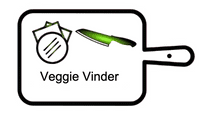How Long Does Kimchi Last?
Kimchi is a Korean side dish consisting of fermented vegetables.
It’s delicious and nutritious but it does last quite a while!
Kimchi has been around for thousands of years and is believed to have originated in China.
However, Koreans claim kimchi as their own.
I’m going to explain you how long kimchi lasts and give you some tips on how to store it properly.
How Long Does Kimchi Last?
Kimchi is a Korean pickled vegetable dish. It is usually fermented using salted vegetables such as cabbage, radish, cucumber, carrot, turnip, garlic, ginger, scallion, chives, and other herbs. It is typically served as part of a meal along with rice, noodles, dumplings, and soup. It is believed that kimchi originated from China around 2,000 years ago. Koreans began making kimchi during the Joseon Dynasty 1392–1910 and it was originally used as a way to preserve food. In modern times, kimchi is now eaten as a side dish or snack. Kimchi is traditionally made with napa cabbage, but many different types of vegetables can be used. The fermentation process takes anywhere from two weeks to several months depending on the type of ingredients used. During the fermentation period, the vegetables undergo a chemical reaction that produces lactic acid, acetic acid, and alcohol. These acids help preserve the vegetables and give kimchi its distinctive flavor.
Baechu Cabbage
Korean cuisine is known for its unique flavors and spices. One of the most popular dishes in Korea is kimchi. This traditional Korean dish is made with various kinds of vegetables, such as Napa cabbage, radishes, carrots, cucumbers, onions, garlic, ginger, green peppers, and sometimes even shrimp. It is typically served with rice, noodles, and soups. There are many varieties of kimchi. Some of these include: • Ssamjang salted soybean paste
Oi Sobagi (Cucumber)
Baechu cabbage is a type of Chinese cabbage native to Korea. It is used in making kimchi, a fermented vegetable dish. In addition to being eaten as a side dish, baechu cabbage is also used in making sauces and pickles.
Boosam Kimchi
Oi sobagi cucumber Baechu cabbage is a Korean traditional vegetable. It is usually served as a side dish but it is also used in making kimchijjigae Korean stew.
Gat Kimchi (Mustard Leaf)
Boosam Kimchi is a type of kimchi made from radish leaves. This kimchi is very popular in Korea. Radishes are known for their ability to detoxify the body. In addition, radishes are rich in vitamin C and potassium. Japgogi Cucumber
How To Store Kimchi
Kimchi is a fermented vegetable dish. It is usually served as a side dish but it can also be used as a condiment. It is generally eaten with rice. It is believed that kimchi originated in China around 2000 years ago. Korean Food Facts
Can You Freeze Kimchi?
Yes, you can freeze kimchi. However, it is not recommended because freezing damages the texture and flavor of kimchi. How Long Can I Keep Kimchi? Answer : Kimchi can last for 3 months if stored properly. But it is better to consume within 2 weeks.
Can Kimchi Go Bad?
Kimchi can go bad if left uncooled. It is advisable to store it in refrigerator. What Is The Best Way To Store Kimchi? Answer: Kimchi should be stored in airtight containers. It should be stored in cool place. Why Do Koreans Eat Kimchi? Answer:"Kimchi" is a traditional Korean dish. It is usually eaten during winter season. Koreans eat it because it helps to prevent colds and flu.
How To Tell When Kimchi Is Bad?
Koreans say that kimchi goes bad after 3 days. But actually, it depends on how long you leave it. It’s better to check it every day. How To Make Kimchi?
How To Keep Kimchi Fresh Longer
Kimchi is a traditional Korean dish consisting of fermented vegetables such as cabbage, radish, cucumber, turnip, carrot, garlic, ginger, scallion, and other ingredients. It is usually served as a side dish but sometimes eaten alone as a snack. It is believed that kimchi was invented during the Three Kingdoms Period 57 BC – 668 AD and was originally called "Ch’angjak" . During the Joseon Dynasty 1392–1910, it became popular among common people and was known as "Jeonbokkeum". In modern times, it has become a staple food in Korea. Kimchi is traditionally prepared using salted fish sauce, red pepper powder, chili peppers, garlic, ginger, onions, green onions, and other seasonings. Today, many variations exist, including spicy versions. Kimchi is generally stored in a refrigerator, but some recipes call for refrigeration only if the fermentation process takes longer than three days.
